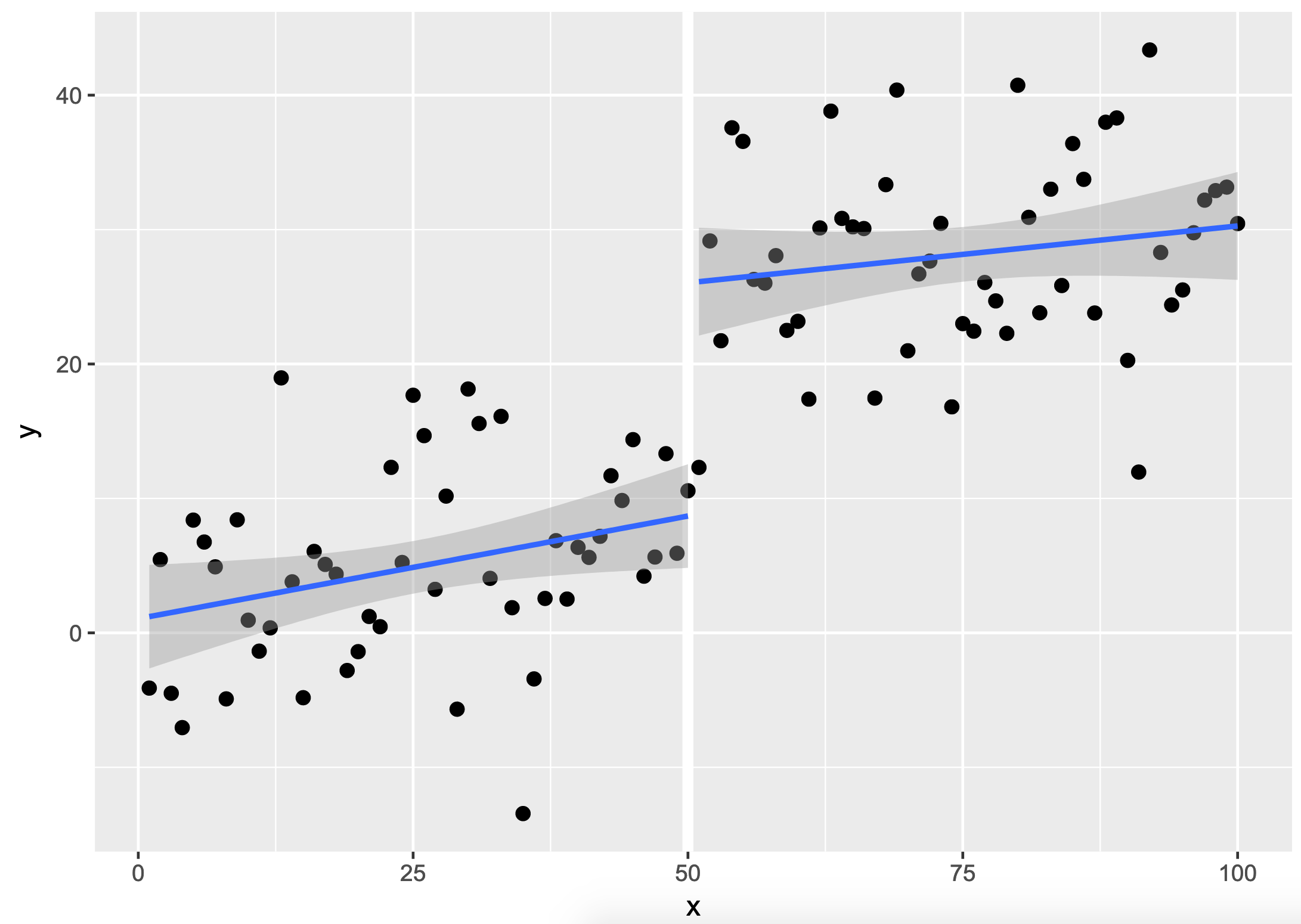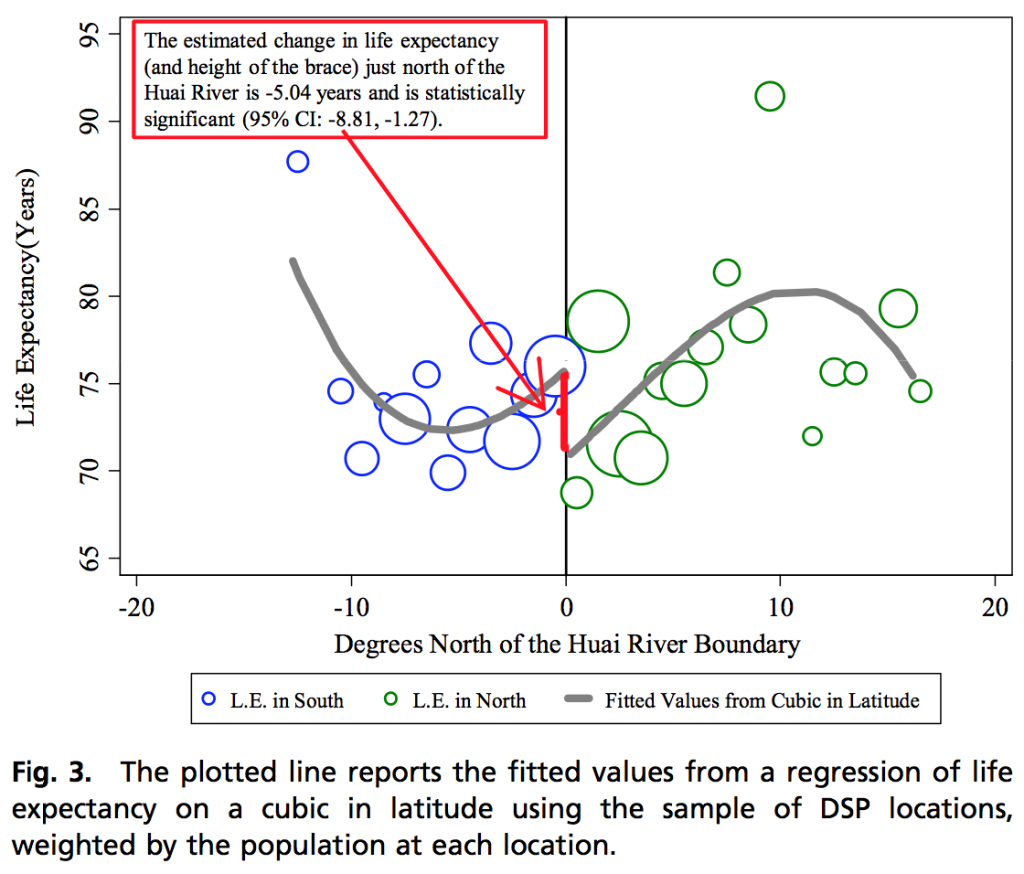Regression discontinuity design (RDD) is a method used to identify the effect of a change implemented at a cutoff point. This usually leads to pretty diagrams like this one:
Which is using a linear regression.
The regression equation for it is
y = const + b1 * x + b2 * c
Where const is the Y intercept, x is the independent (feature) variable, and c is a dummy variable which indicates if x > cutoff. Then, the parameter on b2 can be t-tested to see if the cutoff had an effect on y.
It can also be used with a polynomial regression on both sides:
Here both sides have a different polynomial degree 2 regression, so the equation uses interaction variables:
y = const + b1 * x + b2 * x^2 + b3 * c + b4 * x * c + b5 * x^2 * c
Note that you can always overfit the regressions on each to make sure that the gap seems meaningful when it's not. Gelman & Imbens (2018) argue that you should never use more than degree 2 polynomials in RDD. Even degree 2 is sometimes an overfit.
This method has even been used to estimate the effect of lockdown measures, lie in this CDC study. For reference on RDD design, Lee & Lemieux's book chapter on RDD is a good technical reference.
Your task is to use RDD to estimate the effect of the following events in Quebec:
-
The 20/3/2020 lockdown
-
The reopening of schools on 31/8/2020
-
The 25/12/2020 lockdown
Requirements
You need to find data on at least one COVID measure for y (either COVID cases, hospitalizations or deaths) and provide the following for each:
-
A RDD plot similar to the ones shown above
-
An interpretation of the p-value on the effect of the measure taken (the cutoff parameter)
-
A justification on the design of your regression:
-
The amount of time included on both sides of the cutoff (longer is not necessarily better)
-
The polynomial degree (higher is not always better)
-
Other regression design considerations
- A 2 paragraph explanation of your findings for that event.

